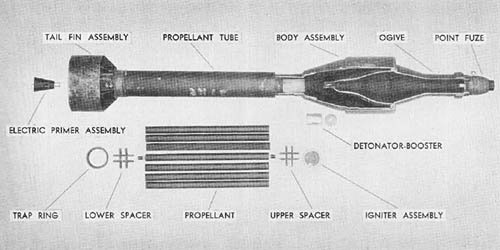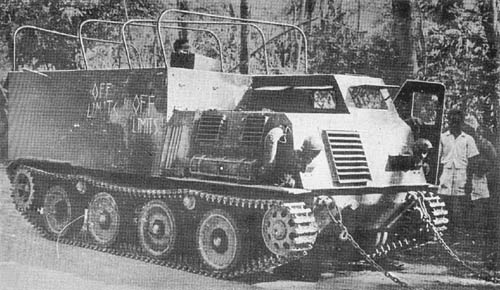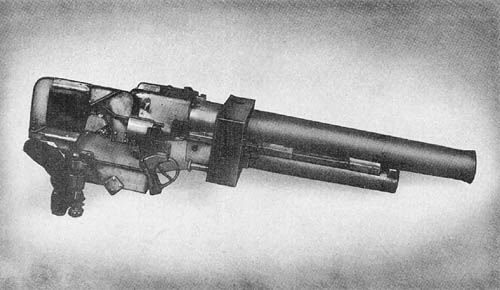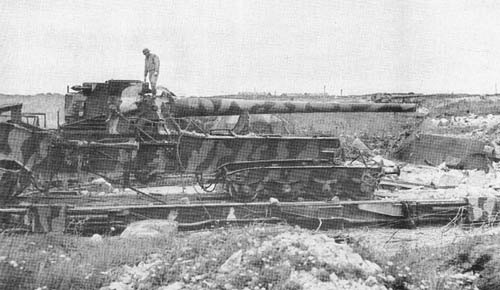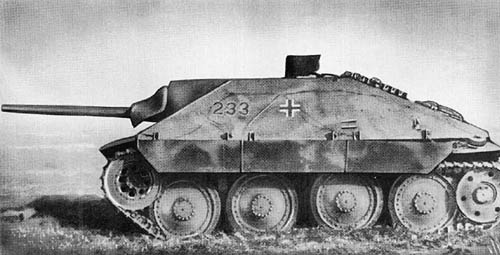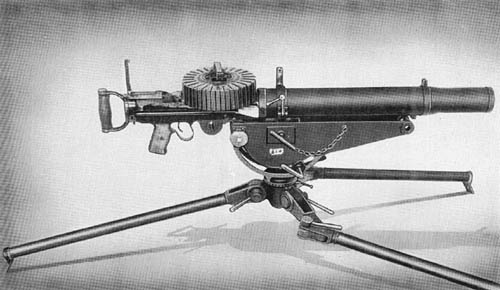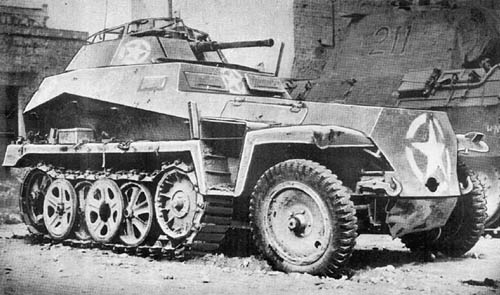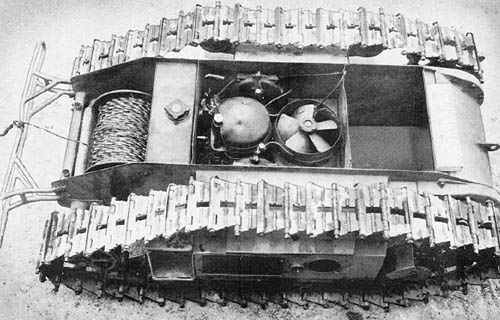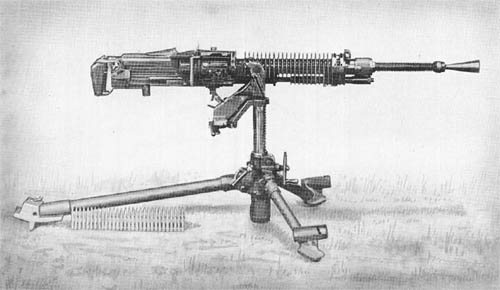
The Japanese 6.5 mm Model 3 Heavy Machine Gun, a gas-operated, air-cooled, full-automatic weapon with a comparatively low cyclic rate, although obsolescent, is being recovered in small quantities from battle areas. It is similar to the 7.7 mm Model 92, but is chambered for the 6.5 mm cartridge.
The gas piston and bolt assemblies, and the barrel and barrel sleeve may be interchanged in the two weapons. However, it is impossible to convert the Model 3 for use with the 7.7 mm ammunition as the strip feed port in the Model 3 is one-eighth of an inch narrower than that in the Model 92.
Various machining cuts found in the internal parts of the Model 3 were eliminated in the later model, to provide for ease of production. The oil reservoir is of slightly different shape and probably has a lower capacity than that of the Model 92. The trunnions are of two diameters. The part of the trunnion which contacts the trunnion bearing in the mount is of smaller diameter than that portion which extends beyond the mount. The head thus formed tends to reduce transverse motion.
The weapon has conventional spade grips provided with two finger triggers fixed integrally with the trigger lever so that either or both will fire the gun. There is no safety device.
Two rear sights are provided: one, a folding ring type anti-aircraft sight, is attached permanently to the rear top of the receiver; the other, a tangent curve, radius arm type, is offset to the right. The latter sight is graduated from 300 meters to 2,200 meters (328 yards to 2,406 yards). It is believed that a cartwheel typefront sight is used, as an adaptor for such a sight is riveted to the front of the cooling jacket.
SPECIFICATIONS
| Weight (w/ tripod) |
|
122 lbs. |
| (w/o tripod) |
|
61.7 lbs. |
| Length |
|
47.2 ins. |
| Sight radius |
|
23.6 ins. |
| Principle of operation |
|
Gas |
| Feeding device |
|
Metal strips |
| Capacity of feeding device |
|
30 rounds |
| Cooling system |
|
Air |
| Ammunition types |
|
Mod. 38, 6.5 mm ball ammunition |
| Rate of fire |
|
Cyclic — 450-500 r.p.m. |
| |
|
Practical — 200 r.p.m. |
| Type of sight |
|
Two rear sights: folding ring, antiaircraft type; tangent curve, radius arm type, grad. 328-2,406 yds. |
| Weight of barrel |
|
|
| Length of barrel |
|
29.2 ins. |
| Length of rifling |
|
26.4 ins. |
| Rifling |
| Twist |
|
Uniform, R.H., one turn in 7.88 ins. |
| Form |
|
Metford segmental |
| No. of grooves |
|
4 |
| Depth of grooves |
|
|
| Width of grooves |
|
|
| Chamber pressure |
|
58,800 lbs. per sq. in. |
| Muzzle velocity |
|
2,434 ft. per sec. |
| Muzzle energy |
|
|
| Maximum range |
|
4,376 yds. |
| Effective range |
|
1,500 yds. |
| Type of mount |
|
Tripod |
| Elevation |
|
-15° to +90° |
| Traverse |
|
33.5° |
Japanese: p. 210.1
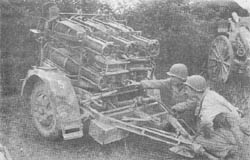 This rocket projector fires the
This rocket projector fires the 